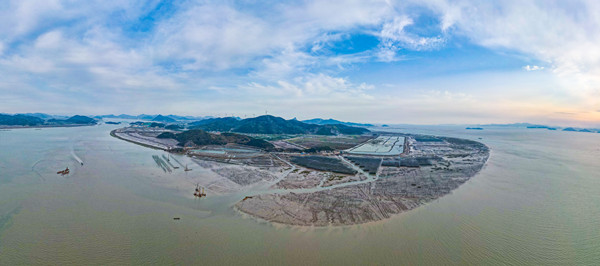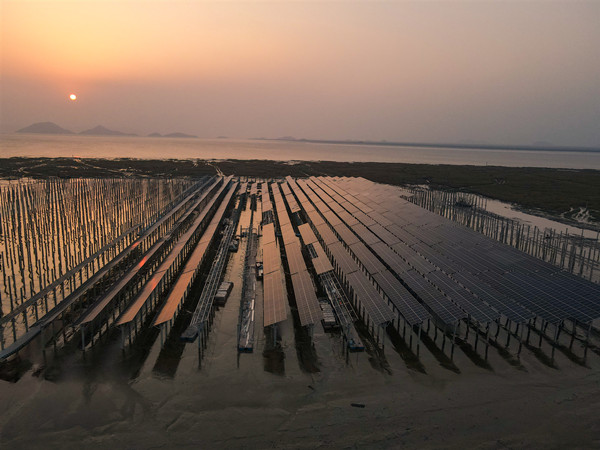
A panorama of Datang Changdatu PV project in Ningbo, Zhejiang Province [Photo/sasac.gov.cn]
Construction of Datang Changdatu photovoltaic (PV) project, the largest of its kind to be built on a coastal tidal flat in China, is making smooth progress.
Located on the west side of the Changdatu seawall in Xiangshan County in Ningbo, East China's Zhejiang Province, the project has a PV matrix covering an area of 4,516 mu (301.07 hectares) and has a total installed capacity of 300,000 kilowatts.
Construction of the project was launched on Aug 31, 2020.
With a focus on both development and ecological protection, the project is designed with a power-generation layer on the top and a bottom layer that is used for breeding seafood.
It combines fishery and PV programs and is expected to improve the comprehensive utilization value of the tidal flat. It also complements the local rural tourism development plan.

A view of the project's construction site under the sunset [Photo/sasac.gov.cn]
Once operational, the project is expected to provide an average of about 330 million kilowatt-hours of power annually. This is equivalent to a reduction of 100,000 tons of standard coal and an emissions reduction of 270,000 tons of carbon dioxide, 2,300 tons of sulfur dioxide and 1,000 tons of oxynitride during the same timeframe.
In addition to meeting local power demands, the project will also play a positive role in the adjustment of the energy structure and energy conservation, as well as contribute to emissions reductions and sustainable economic and social development in the region.
Last but not least, it will be a player in realizing China's goal of peaking carbon dioxide emissions by 2030 and achieving carbon neutrality by 2060.

Two mudskippers are photographed at the project's construction site. [Photo/sasac.gov.cn]
(Executive editor: Niu Yilin)